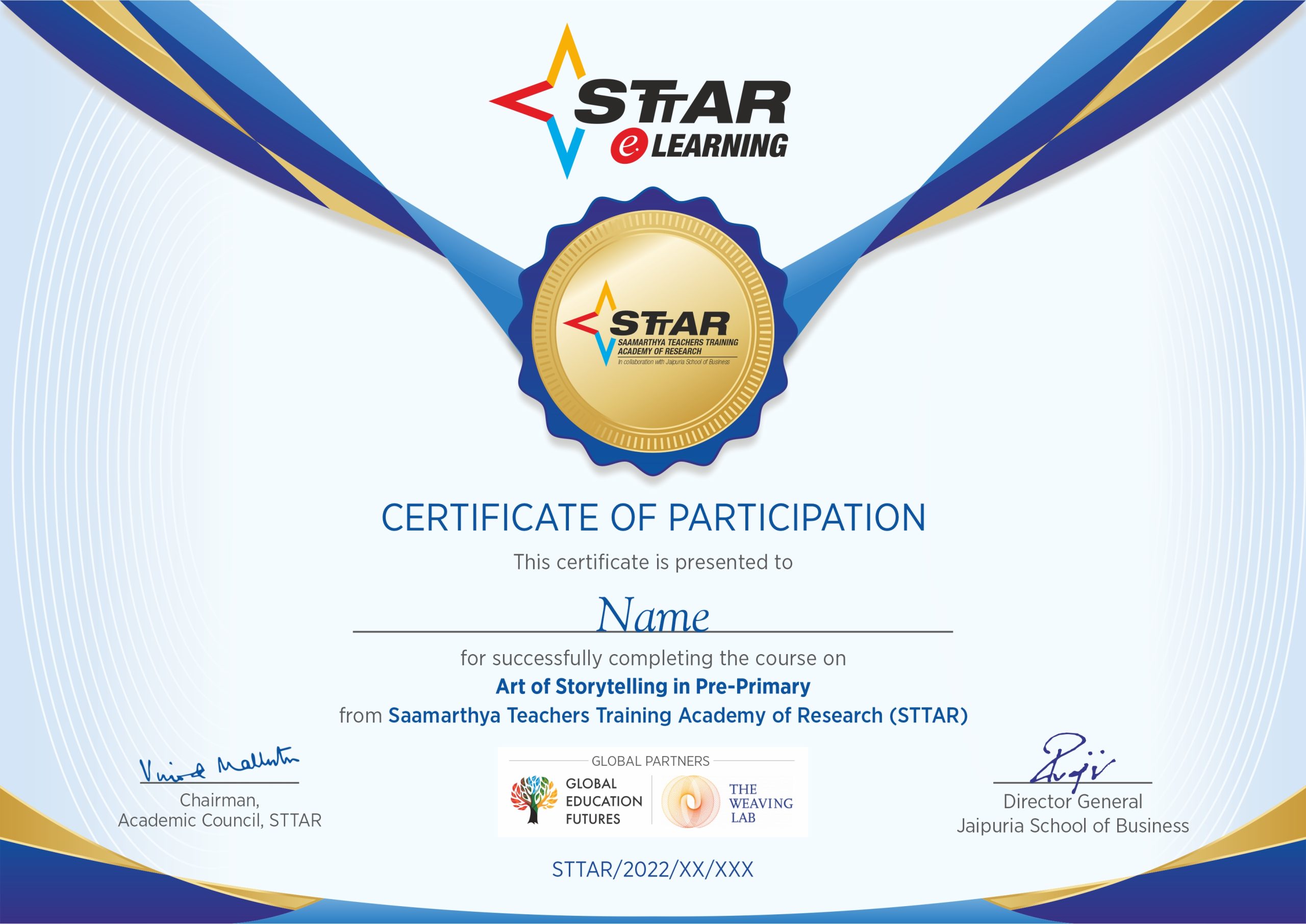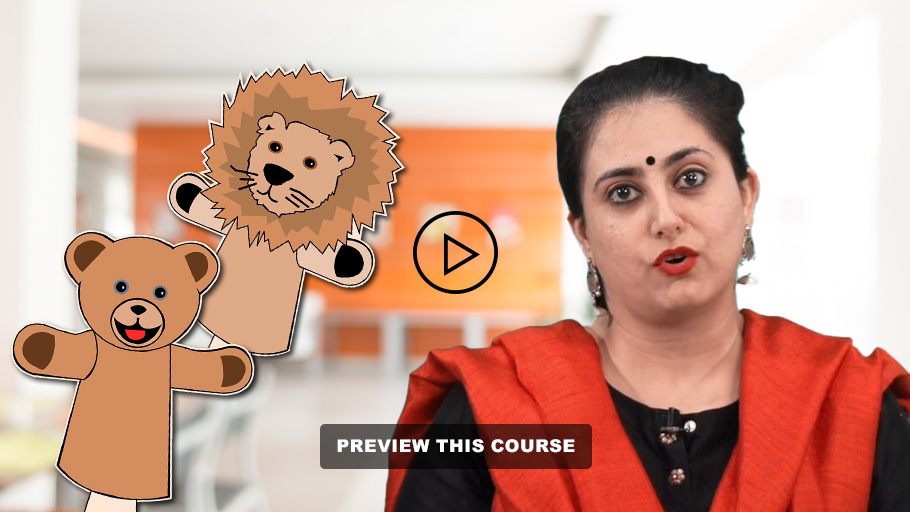Art of Storytelling in Pre-Primary
- Understand why storytelling is important for children from brain development perspective
- Acquire the skill of integrating storytelling in classrooms and lessons
- Learn the various elements and types of storytelling
- Know the essential tools of a storyteller
- Learn to create interesting story maps, story arcs or story pyramids
- Know what props to use for convincing storytelling
- Develop the skill to tell storytelling in an engaging and interactive manner
- Create stories aimed at enhancing cognitive and critical thinking skills in children
- Inspire the children to be imaginative, creative and expressive
Reviews (225)
6 hours
20
1
2
Lifetime Access
507
STTAR E-Learning Certificate - Art of Storytelling in Pre-Primary
6 hours
20
1
2
Lifetime Access
507
STTAR E-Learning Certificate - Art of Storytelling in Pre-Primary
About the Course
Course FAQs
Stories have the power of grabbing students’ attention. They make lessons interesting, engaging and engrossing. For ages, teachers have leveraged the power of storytelling to impart knowledge to learners. In new-age pedagogy, Storytelling is earning its pride of place by becoming a practice that helps to improve learning outcomes.
Storytelling is emerging as an effective and potent pedagogical practice. Teachers are incorporating stories in classroom lessons. Problems and questions are being embedded in stories to encourage problem-solving abilities, enhance critical thinking and promote higher-order thinking. Knowledge presented in stories also has greater retention among children.
Early years’ teachers.
This course will help you acquire the skill of storytelling in classrooms and lessons. You will understand the elements of various types of stories, know different tools a storyteller uses, create interesting story maps, story pyramids, and learn to tell stories in an engaging manner.
Upon completion of the course, a participant will get the STTAR E-Learning Certificate for Storytelling.
A teacher will have lifetime access to the course.
Yes, a teacher may do multiple self-paced learning courses at the same time. There is no limit to the number of courses a teacher may do simultaneously or one after the other.
Yes, the assessments are mandatory. A teacher will get the STTAR E-Learning Certificate only after completing assessments.
Course Structure
- Introduction to stories and a brief history of storytelling -Part I
- Introduction to stories and a brief history of storytelling -Part II
- Introduction to stories -Part III
- Essential tools of a storyteller
- Key Elements/ Essentials of a Story- Part I
- Key Elements/ Essentials of a Story- Part II
- Key Elements/ Essentials of a Story- Part III
- Props and Types of props puppets – Part I
- Props and Types of props puppets – Part II
- Types of Stories- Call & Action and Pourquoi Stories – Part I
- Types of Stories- Call & Drawing Stories – Part II
- Types of Stories- Call & Rhyme Away Stories – Part III
- Types of Stories- Call & Chain Stories – Part IV
- Types of Stories- Finger Stories– Part V
- Types of Stories- Musical Stories – Part VI
- How storytelling affects our brains – Part I
- How storytelling affects our brains – Part II
- Importance of storytelling and tips of storytelling- Part -I
- Importance of storytelling and tips of storytelling- Part -II
- Conclusion Video
- Resource material
About Instructor

Ms. Amrit Nagpal
Expert in Early Years’ Education

Earn The STTAR Certificate
After finishing the course, you will get a Certificate from STTAR in collabration with our Global Partners – Global Education Futures and The Weaving Lab.
STTAR E-Learning Certificate – Story Telling.
People love learning with STTAR







